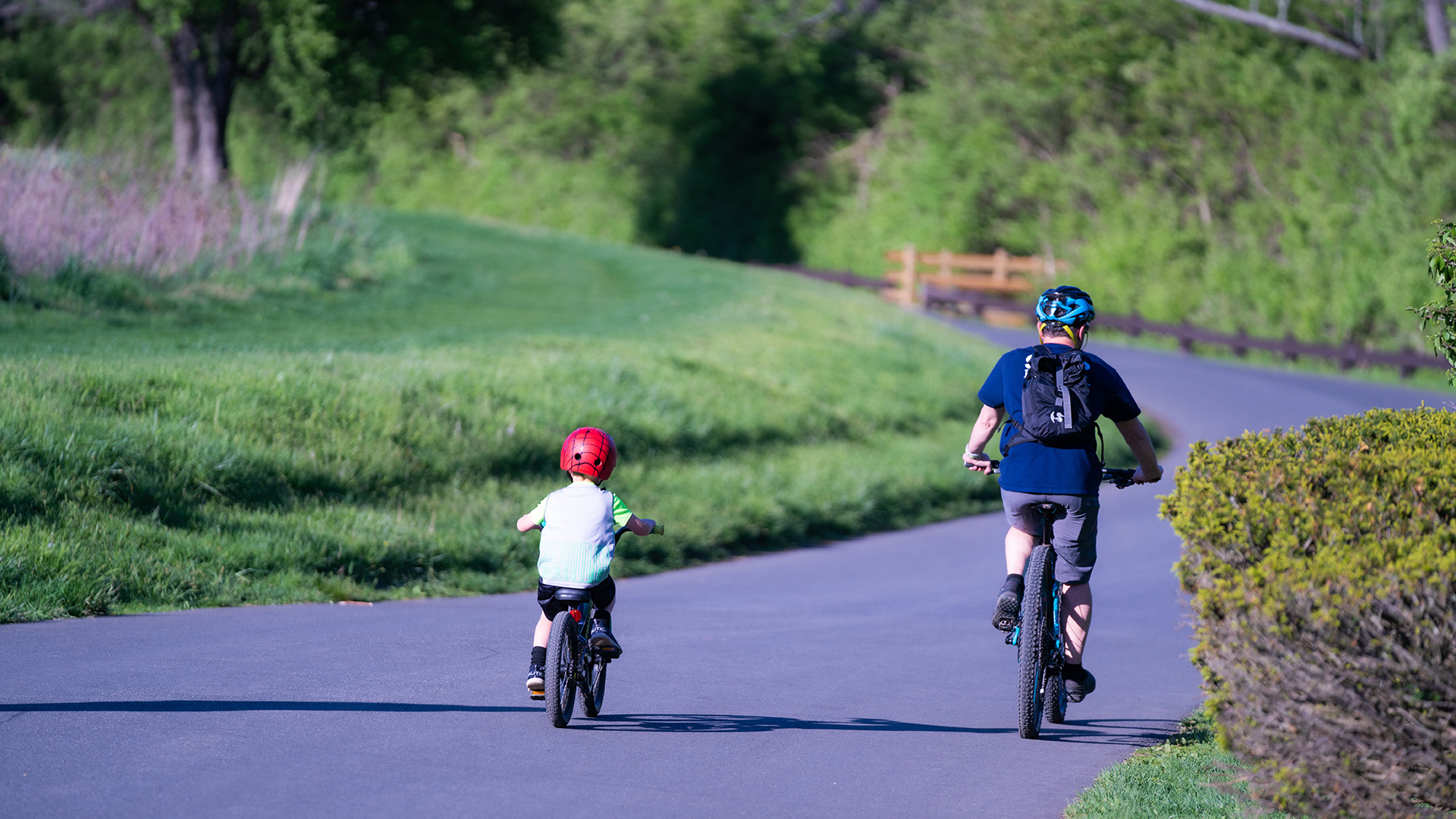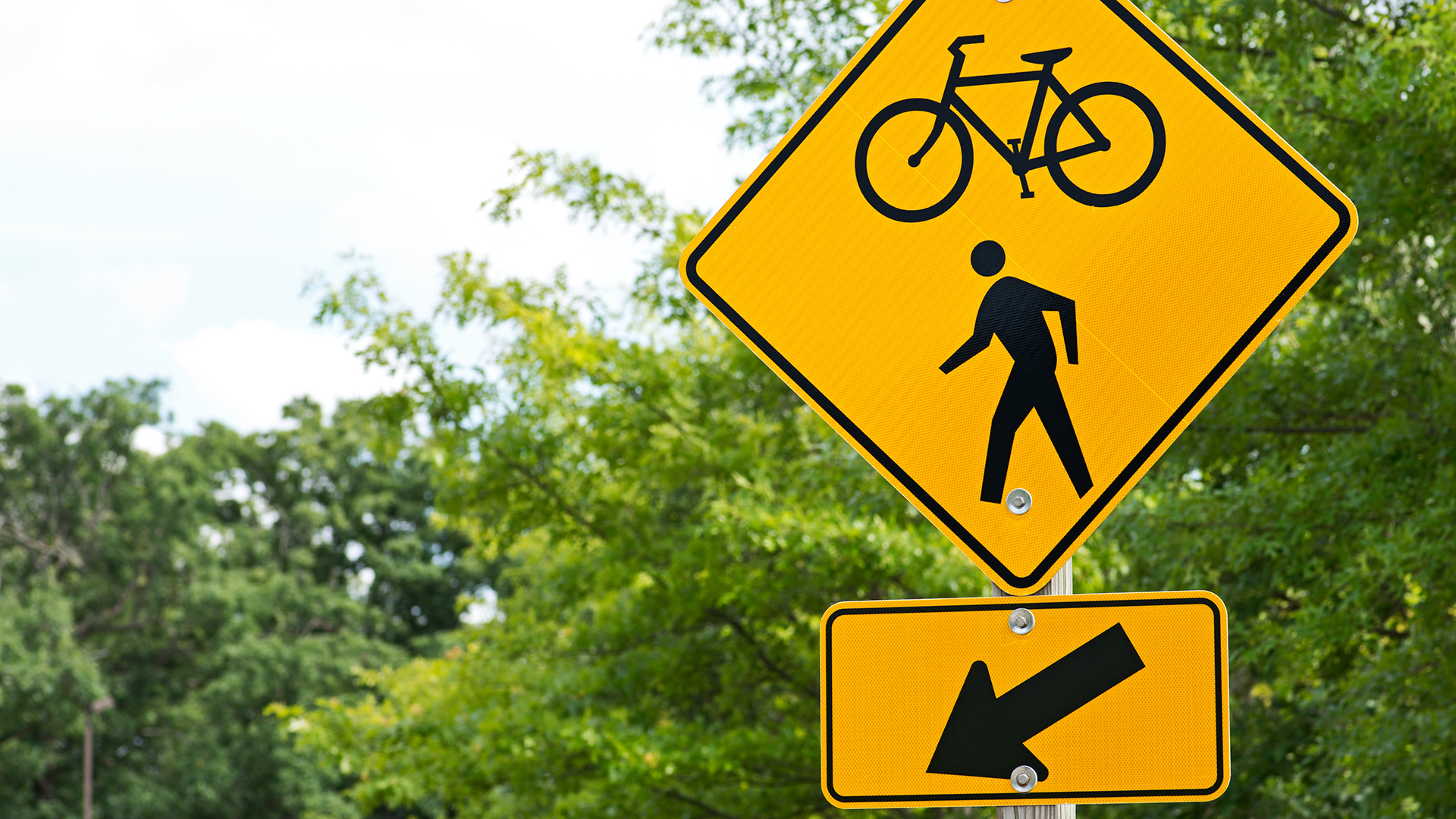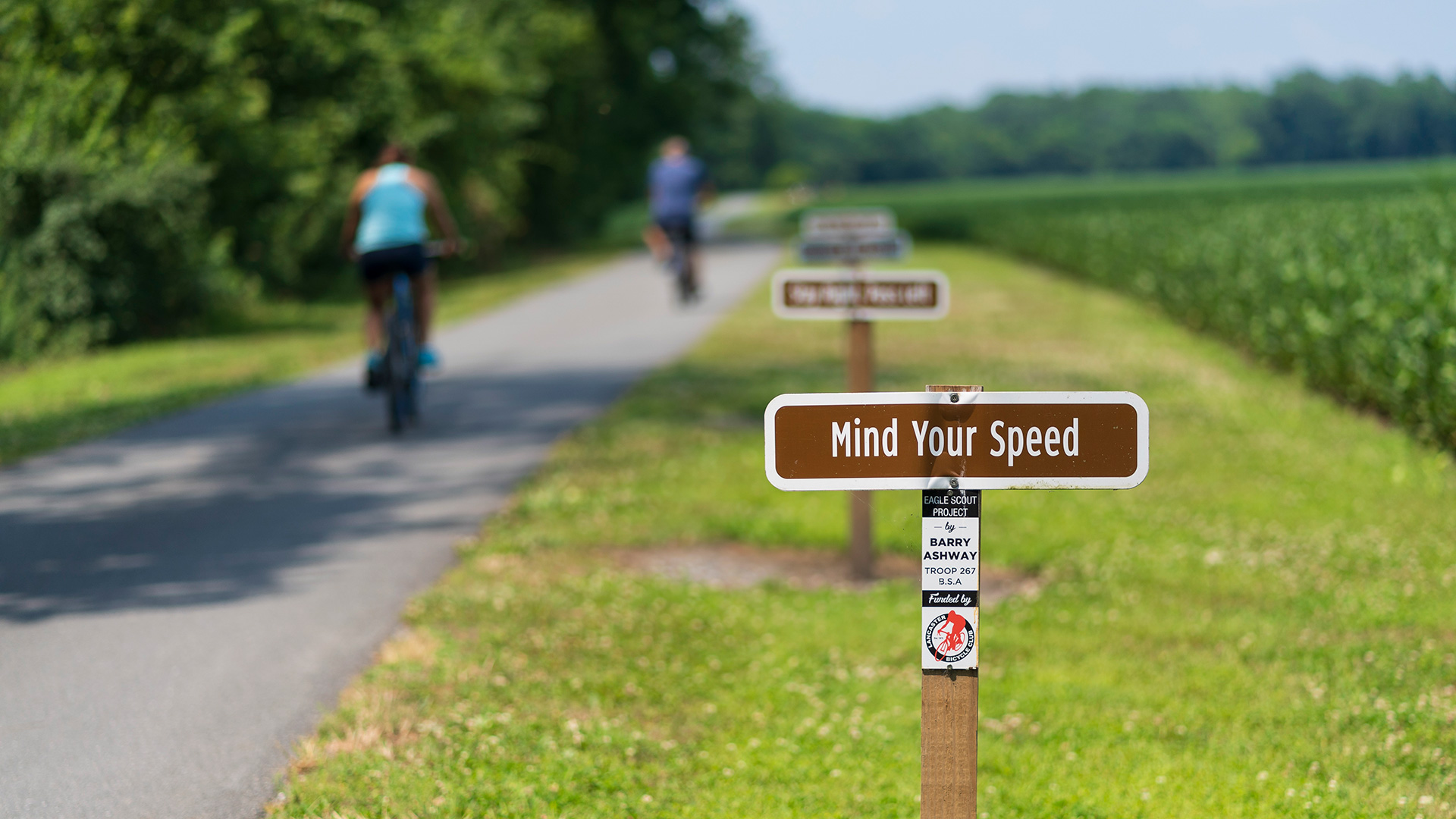August 9, 2021
E-bike: bicycle or motorized vehicle?
Until recently, federal regulations placed e-bikes in the motor vehicle category, but recent changes authorize local land managers to permit e-bikes on non-motorized trails.
The question becomes: should e-bikes be allowed everywhere bicycles can go? Responses are divided, and not just at the personal opinion level-regulations also differ state by state. This article breaks down what those regulations are, as well as considerations for land managers determining the best course of action for their local trails.

Should e-bikes be allowed on multi-use paths? Our industry holds a split opinion on this question, citing distinct pros and cons.
What is an E-Bike?
The US Bureau of Land Management defines an e-bike as a “bicycle with a small electric motor of not more than 750 watts (one horsepower) which assists in the operation of the bicycle and reduces the physical exertion demands on the rider.” In most states, e-bikes are separated into three classes based on top speed and whether pedaling is necessary to engage the motor:
- Class 1 e-bikes, which have a motor that only kicks in when the rider is pedaling, and stops when the bicycle reaches 20 mph.
- Class 2 e-bikes, which have a motor that may be used exclusively to propel the bicycle, and stops when the bicycle reaches 20 mph.
- Class 3 e-bikes, which have a motor that only kicks in when the rider is pedaling, and goes up to 28 mph before the motor stops assisting.
Changes to National E-Bike Regulations
On August 20, 2019, US Secretary of the Interior David Bernhardt signed Secretary’s Order 3376 that directed Department of the Interior (DOI) bureaus (such as Bureau of Land Management, National Park Service, Fish and Wildlife Service, and Bureau of Reclamation) to revise their regulations to exempt e-bikes from the definition of motor vehicle. On December 2, 2020, the Bureau of Land Management did so, publishing the Final BLM E-bike Rule. This rule exempts e-bikes from the definition of off-road vehicles “where certain criteria are met and an authorized officer expressly determines through a formal decision that e-bikes should be treated the same as non-motorized bicycles.”
Essentially, while this rule does not in and of itself open non-motorized trails to e-bike use, it authorizes local land managers to decide what bikes to allow on what trails.
“The regulatory change effectuated by this rule has the potential to facilitate increased recreational opportunities for all Americans, especially those with physical limitations, and could encourage additional enjoyment of lands and waters managed by the BLM,” states the rule.
Differing Rules by State
From there, regulations differ by state. According to the NCSL, some states, such as Delaware, Iowa, and Nebraska, define e-bikes as bicycles, eliminating a distinction when operating on trails. Other states, like Washington, Arizona, and Utah, allow e-bike operation on multi-use paths, but allow local land managers to enact stricter operation regulations on those facilities. Other states have not created distinct e-bike laws. You can learn more about state-by-state e-bike regulations on the People for Bikes website. In a nutshell: there is lots of variety in state regulation of e-bikes.

The Bureau of Land Management has authorized local land managers to decide what bikes to allow on what trails. Still, state regulations vary widely.
So”¦ Should E-Bikes Be Allowed on Multi-Use Paths?
As with many nuanced transportation topics, our industry holds a split opinion on this question, citing distinct pros and cons.
E-bike proponents maintain that:
- Allowing e-bikes on non-motorized trails helps people with physical disabilities and elderly people who otherwise might not be able to ride a bike.
- E-bikes make traveling longer distances by bike a more attractive and doable option to more people. (For this reason, early research shows that e-bikes have beneficial implications for public health.)
- Ultimately, removing barriers to bicycling gets people out of their cars, due to the ability to travel farther with less effort.
However, some trail users state concerns with allowing e-bikes on trails because:
- It changes the experience for people looking to get away from motorized vehicles, particularly on off-road trails (think electric mountain bikes).
- Higher speeds and greater speed differential can lead to more dangerous conflicts on the facility.
- There is concern that permitting a bicycle with a motor on trails is a “slippery slope” that will lead to future problems managing trails.
Managing E-Bikes on Multi-Use Paths
With these considerations in mind, how should local land managers determine e-bike regulations for their trails?
In a resource titled “E-Bikes on the Trail,” Rails to Trails Conservancy recommends first examining the conditions and uses of the trail in question. “A central consideration is the compatibility of trail uses-including riding e-bikes-so users can have the experience that they expect,” they write.
Rails to Trails Conservancy also notes that e-bike classification should be considered when determining if e-bikes are suited for the trail or facility at hand. Different classes may be managed separately on public lands. For example, a trail may be open to Class 1 and 2 e-bikes, but not allow Class 3.
E-Bike Regulations Are Difficult to Enforce-So Plan for Them
In their Electric Bicycles Policy Statement, APBP acknowledges that enforcing e-bike regulations is difficult. “Within a few years, it is likely that many e-bikes will be indistinguishable from human-powered bicycles without close examination by a person with current and specific knowledge about e-bike technology,” the statement reads. “It is already difficult to determine the type of e-bike by visual inspection of the bike itself.”
With all of this in mind, APBP advocates for e-bikes to be considered in the design of future bicycle and pedestrian infrastructure. “Anticipated growth in e-bike use may indicate assigning a higher priority to facilities that better accommodate bicyclists of varying speeds and degrees of skill, as well as facilities that better separate user groups,” they write. Designs that plan for bicyclists of varying speeds will reduce the likelihood of conflicts on the paths and create better experiences for everyone.

Varying bicyclist speeds, due to e-bikes, should be taken into account in the design of future transportation facilities. But at the end of the day, bicyclist etiquette remains important to avoid trail conflicts.
An Emphasis on User Behavior
Associate Planner Conor Semler says at the end of the day, bicyclist behavior is more important than the bike they’re using.
“Technology aside, people should be expected to behave responsibly and defer to slower moving traffic,” Conor said.
Similarly, Rails to Trails Conservancy states the most important thing is to educate trail users on trail etiquette.
“Both traditional cyclists-especially fit cyclists or racers-and e-bike users have the potential to cause speed-related user conflicts,” they write. “In order to maintain a safe experience for everyone, cyclists-whether using an e-bike or a regular bike-must respect the experiences of pedestrians, other cyclists and other trail users by using safe speeds and signaling when passing.”
Keep the Conversation Going
E-bike sales continue to climb, which means we should continue to ask these questions and consider e-bikes in transportation facility design and management. Feel free to contact us to talk further about this topic!
